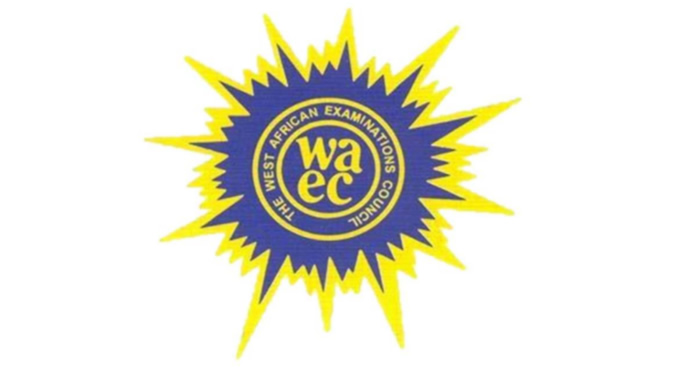The West African Examinations Council (WAEC) is taking a bold step into the future of assessment in Nigeria by announcing new infrastructure requirements for schools wishing to host the upcoming Computer-Based West African Senior School Certificate Examination (CB-WASSCE). Starting from 2026, schools will no longer rely solely on the traditional paper-and-pencil method; instead, they will be required to conduct examinations using modern digital facilities.
This transition marks one of the most significant changes in the history of WAEC examinations, and it comes with strict guidelines designed to ensure credibility, efficiency, and fairness in the examination process.
Why the Shift to CBT?
For decades, WAEC has battled with several challenges during examinations, including:
- Examination malpractice – ranging from impersonation to smuggling of unauthorized materials.
- Logistical difficulties – such as printing and distributing millions of exam papers across the region.
- Delays in results processing – due to manual marking and collation.
By moving to Computer-Based Testing (CBT), WAEC aims to:
- Enhance security – with CCTV surveillance and automated systems reducing malpractice.
- Ensure faster results processing – as answers can be graded digitally where applicable.
- Reduce costs in the long run – by minimizing printing, transportation, and distribution logistics.
- Align with global standards – as many international exams (TOEFL, GRE, IELTS, SAT) already use CBT.
This decision also mirrors the path already taken by the Joint Admissions and Matriculation Board (JAMB), which successfully transitioned to CBT years ago.
Minimum Infrastructure Requirements for Schools
According to WAEC’s new directive, any school that wishes to be a CBT examination centre must meet the following requirements:
1. Computing Systems
- A minimum of 250 functional laptops must be provided.
- Schools must have an extra 10% (about 25 additional laptops) as backup in case of technical failures.
- All systems must be connected to a robust server capable of supporting 250 computers simultaneously.
2. Connectivity
- The server and laptops should be connected using Local Area Network (LAN) cables to guarantee reliability.
- Wireless (Wi-Fi) networks will not be considered sufficient for exam conditions.
3. Power Supply
- Schools must install a Uninterruptible Power Supply (UPS) for all systems to prevent disruptions during examinations.
- A backup generator with a minimum capacity of 40 kVA is compulsory.
- Adequate electrical wiring and stable power distribution must be ensured.
4. Security and Surveillance
- CCTV cameras must be installed across examination halls.
- Footage must cover all angles of the testing environment for real-time monitoring and post-exam reviews.
5. Comfort and Environment
- Examination halls must be properly air-conditioned to prevent overheating of systems and ensure student comfort.
- Adequate lighting and ventilation must be provided.
- A holding room or reception area must be available for students waiting for their turn.
Lessons from JAMB’s CBT Model
The WAEC model is very similar to what JAMB already enforces in accredited CBT centres. For example, JAMB also requires:
- 250 functional systems + 10% backups.
- 40 kVA generator and UPS.
- CCTV monitoring of exam halls.
This consistency across national examination bodies shows Nigeria’s clear commitment to digital transformation in education.
Implications for Schools
The new WAEC requirements come with both opportunities and challenges.
Opportunities:
- Schools that comply will gain recognition as accredited WAEC CBT centres, which boosts their reputation.
- Students in such schools will enjoy early exposure to digital assessment, preparing them for university entrance exams and international tests.
- This may attract more enrolments as parents seek schools with modern learning facilities.
Challenges:
- Many schools, especially in rural areas, may find it financially difficult to procure 250 laptops, servers, and generators.
- The cost of installation, maintenance, and staffing (IT technicians, CCTV monitoring) could be very high.
- There may be digital literacy gaps among students and teachers, requiring additional training.
Possible Support Systems
Recognizing these challenges, WAEC has begun holding sensitisation workshops in different regions, such as Port Harcourt. These sessions are supported by technology companies and education stakeholders, including:
- Teadro Systems Ltd
- National Association of Proprietors of Private Schools (NAPPS)
- Bank of Industry (BOI)
- HP, Lenovo, and Canon
This suggests that WAEC is considering public-private partnerships (PPPs) to help schools acquire the necessary infrastructure. Some schools may also benefit from grants, loans, or cooperative arrangements with tech companies.
Broader Impact on Education in Nigeria
The transition to CBT for WAEC will not only change how exams are written but also:
- Drive ICT investment in schools – forcing them to modernize their computer labs.
- Promote digital literacy – as students will need to be proficient in using computers.
- Reduce malpractice – with improved monitoring and stricter controls.
- Encourage innovation – as schools may develop internal e-learning systems to prepare students for CBT.
This move could be a game changer for Nigeria’s education sector, positioning it closer to global digital learning standards.
Timeline for Implementation
- 2025: WAEC is sensitising schools and stakeholders across Nigeria.
- 2026: Full rollout of CBT WASSCE begins. Only schools that meet the infrastructure requirements will be accredited as examination centres.
This means schools have barely a year to upgrade their ICT facilities or risk being excluded from hosting WAEC exams.
